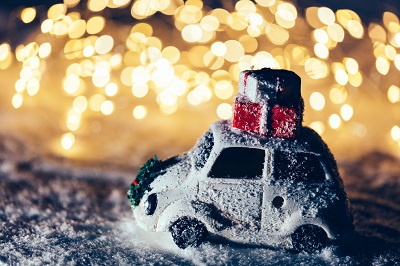Driving tips for the holiday season

Driving during the holidays is even more dangerous than at other times of the year. Weather and road conditions can be hazardous – think snow, ice, fog and reduced visibility. In addition, there may be more than the usual number of impaired or fatigued drivers on the road as well as drivers who may be stressed by the holidays and thinking of things other than driving.
Here are some tips to improve your driving safety and the safety of your passengers during the holiday season.
1. Always look first to eliminate exposure to the hazards of seasonal driving by avoiding unnecessary travel. If it’s a longer trip, are there other options such as taking a bus, train or plane? For short trips, public transportation may be a better option.
2. Don’t drive if road or weather conditions are unsafe, or worsening. Cancel, re-schedule, or re-route trips. Check DriveBC.ca and news and weather reports for current conditions.
3. If a trip is necessary, make sure you select the safest route, give yourself extra time to get where you’re going without rushing, and implement a check-in plan so others can keep track of your progress.
4. Ensure your vehicle is road worthy, that is has had a winter check-up and is equipped with winter wiper blades and a matched set of four winter tires.
5. Make sure your vehicle has an emergency kit that includes: windshield scraper and snowbrush, reflective safety triangles, matches or lighter, tire chains and gloves, first aid kit, shovel and traction mat, sand or kitty litter, flashlight and extra batteries, extra clothing and footwear and a fully charged cell phone and charger as well as bottled water and non-perishable snacks. If you get stuck, stay with your vehicle.
6. Winter road conditions vary around the province and can change quickly. Make sure you know how to drive for the conditions before you get behind the wheel. This includes knowing how to brake safely in snow or on ice, and how get out of a skid.
7. Drive more slowly and maintain a safe following distance. It takes longer to stop on slippery roads so you should keep at least four seconds behind the vehicle ahead of you. You should also drop your speed to match road conditions. The posted speed is the maximum speed under ideal conditions and seasonal conditions are often anything but.
8. Fatigue impairs driving abilities. To combat this, roll down your windows to get fresh air, keep the temperature at reasonable 18 to 20° Don’t over-dress (remove jacket, toque and mitts). Have sunglasses handy to reduce road glare. Travel during daylight hours to manage eye fatigue. Stop at regular intervals and keep snacks on hand
9. Visit ShiftIntoWinter.ca for more about safe seasonal driving.
From all of us at Road Safety at Work, the best of the holiday season to you and your families.